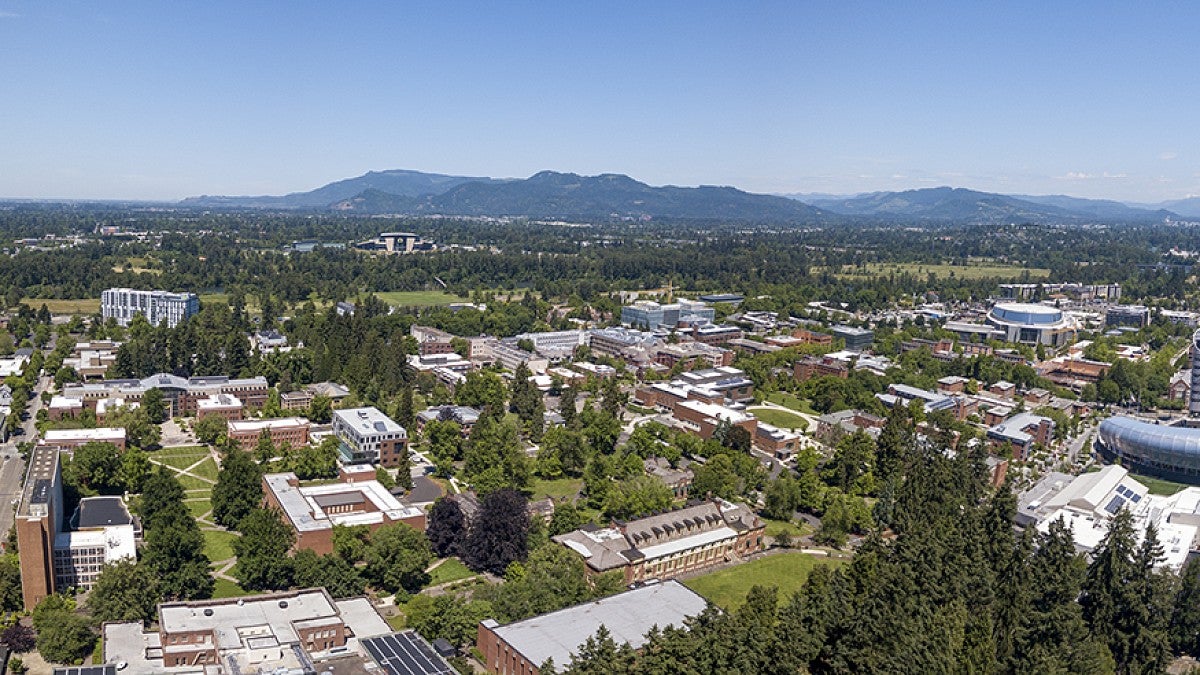The Board of Trustees of the University of Oregon received a detailed briefing about the UO’s response to the COVID-19 pandemic and fall resumption plans at its June 4 videoconference meeting.
President Michael Schill started the meeting by recognizing the tragedy of George Floyd’s death at the hands of police in Minnesota and the systemic injustices and racism that continue to affect communities of color.
“I know our students, faculty and staff, like those in our community of Eugene, are hurting; they are angry and distressed,” Schill said. “We see their tears and hear their cries for reform.”
“I know the board, campus and community will expect to hear more about how the University of Oregon will continue to address racial equity: to listen, respond and continue to commit to support meaningful change,” he added.
Schill noted that much has changed at the UO since the board of trustees last met in mid-March, just as the full scope of the COVID-19 pandemic was crystallizing.
“No single challenge has impacted our university community like this pandemic,” he said. “Every single member of our community of students, faculty and staff have had to radically rethink their learning, teaching, research and way of life.”
Schill and other university leaders praised the creative work and dedication of UO employees for finding ways to operate in and deal with the new reality.
“I’m stunned and amazed by the work the UO staff has done,” said UO board Chair Chuck Lillis. “I, for one, am really impressed.”
Added Provost Patrick Phillips, “The faculty have gone above and beyond. And the students have stuck with us.”
In other business, the board approved a resolution allowing the university to negotiate a long-term ground lease of the university-owned Romania lot on the eastern edge of campus with a private developer. And it adopted a rewrite of the Student Conduct Code aimed at making the code more accessible to students.
The board also engaged Nathan Grawe, an economist from Carleton College and author of “Demographics and the Demand for Higher Education,” in a discussion about national demographic trends and their effects on institutions of higher education.
Additionally, the board applauded the service of trustee Connie Ballmer and Vice President for Research and Innovation David Conover, both of whom are stepping down this summer, and formally recognized Dianne Nelson, who is retiring after working for six decades as a UO telephone operator.
The university took a number of steps to control costs, Moffitt said, including hiring and travel freezes and placing some employees from auxiliary units on leave without pay, which allows them to keep their university-provided health insurance. Some university leaders also took voluntary pay cuts.
Looking ahead, the financial blow to the university could be greatly worsened by a substantial drop in student enrollment in the fall, as some national surveys have projected, or a big cut to the university’s budget appropriation from the state of Oregon, Moffitt said.
Roger Thompson, vice president for student services and enrollment management, told the board that prior to COVID-19, the UO was on track for a record freshman class.
“Usually by this point of the year, we can project our fall enrollment within 1 percent,” Thompson said.
But there’s no such certainty this year, he said, and the university is unlikely to know its final enrollment numbers until fall term has actually arrived.
Students and their families “want to know what the university experience is going to look like in the fall,” Thompson said.
Thompson and Director of Housing Michael Griffel both expressed confidence that the UO could provide a safe and positive in-person experience for incoming students.
Chief Resilience Officer Andre Le Duc outlined initial plans for the possible resumption of in-person activities on campus in the fall. All planning efforts will comply with state and federal guidelines and place the safety of students, employees and the entire campus community as a top priority.
Those plans will involve a revamped class schedule with longer school days and no classes with more than 50 students, rigorous COVID-19 testing and contact tracing for students and employees, and mapping every classroom and office space at the university to allow for adequate distancing.
The presentation also covered planning efforts to safely return to in-person activities in university work spaces as well as student housing and athletics.
—By Saul Hubbard, University Communications


